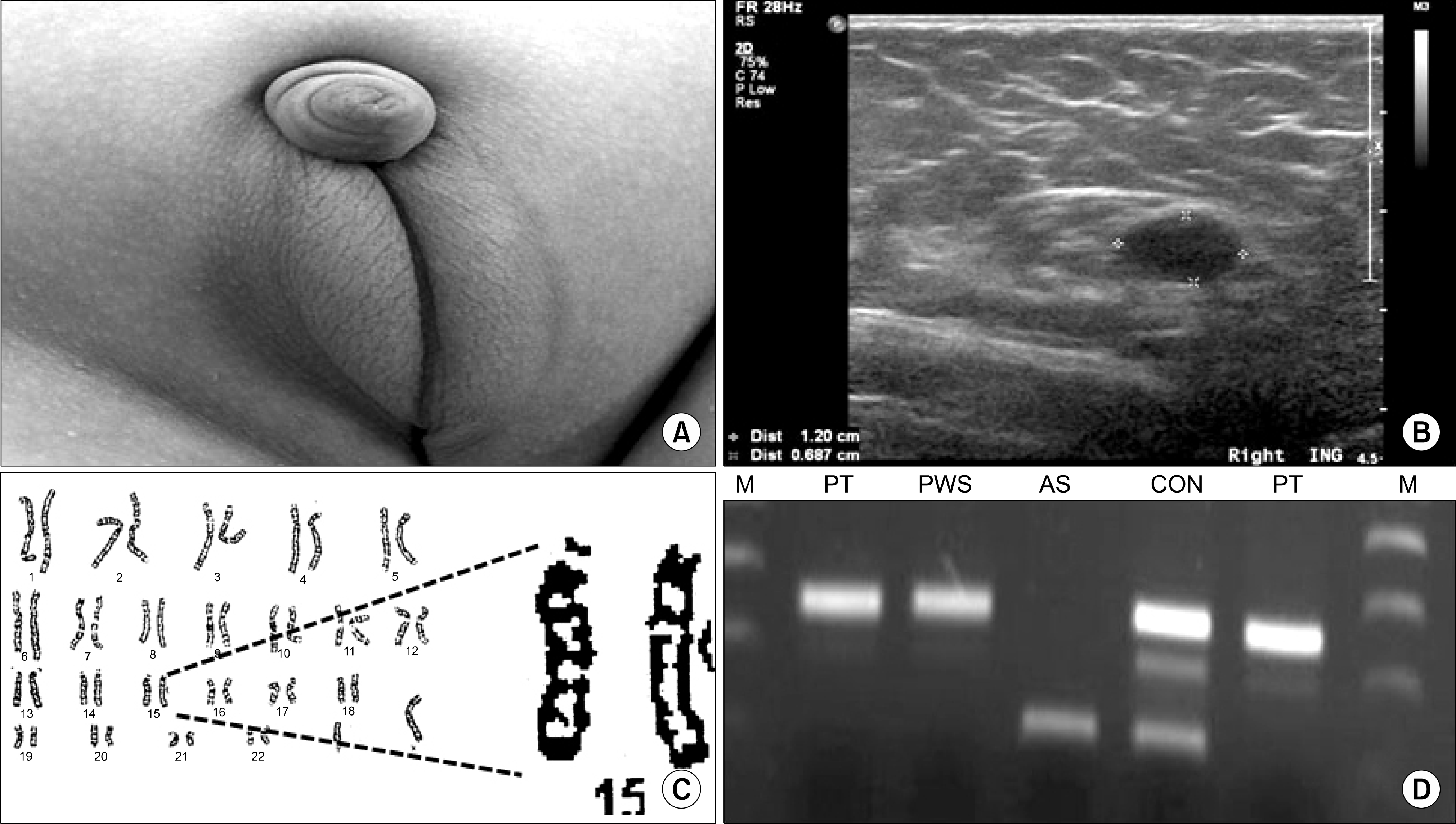Abstract
Prader-Willi syndrome (PWS) is a rare genetic disease caused by a deletion or disruption of genes in chromosome 15. Commonly associated characteristics of this disorder include obesity, mental retardation, short stature, and hypogonadotropic hypogonadism. A 3-year-old-boy who initially presented hypoplastic scotum, small penis and bilateral cryptorchism was confirmed the diagnosis of PWS using of with genetic tests. Finally, he was taken bilateral orchiopexy.
REFERENCES
1). Lee JE, Moon KB, Hwang JH, Kwon EK, Kim SH, Kim JW, et al. Clinical characteristics and genetic analysis of Prader-Willi syndrome. Korean J Ped. 2002; 45:1126–33.
2). Yang YH, Sohn YS, Kim MS, Kim DH, Chung SC. The usefulness of fluorescence in situ hybridization (FISH) in the diagnosis of Prader-Willi syndrome. Korean J Ped. 2000; 43:360–4.
3). Ramsden SC, Clayton-Smith J, Birch R, Buiting K. Practice guidelines for the molecular analysis of Prader-Willi and Angelman syndromes. BMC Med Genet. 2010; 11:70.

4). Nagai T, Mori M. Prader-Willi syndrome, diabetes mellitus and hypogonadism. Biomed Pharmacother. 1999; 53:452–4.

6). Crinò A, Schiaffini R, Ciampalini P, Spera S, Beccaria L, Benzi F, et al. Hypogonadism and pubertal development in Prader-Willi syndrome. Eur J Pediatr. 2003; 162:327–33.

7). Kim HH, Chung KH, Choi H. Micropenis in children: clinical observations and managements. Korean J Urol. 1987; 28:821–6.
8). Kim CS, Kim SW, Choi H. Intersex. Korean J Urol. 1986; 27:152–8.
9). Choi WS, Kim KB, Ryoo HS, Kim KS. One case of the Prase-Willi syndrome. Korean J Urol. 1981; 22:630–2.
Fig. 1.
(A) Genital findings of Prader-Willi syndrome (PWS). Bifid scrotum and micropenis are observed. (B) Inguinal sonography reveals the right undescended testicle in the inguinal area and marked thickening of inguinal fat layers. (C) A conventional cytogenetic study shows normal patterns of chromosome 15. (D) PWS specific methylation study demonstrates specific bands for PWS. PT: from patient DNA, PWS: positive control from confirmed PWS patient, CON: negative control from normal control, AS: from confirmed Angelman syndrome patient, M: DNA marker.





 PDF
PDF ePub
ePub Citation
Citation Print
Print


 XML Download
XML Download